Permissions
The term "Member" refers to any individual (i.e. "user") that has access to the EVAL platform by creating an account. Members can run and create applications. Members can create a personal account and serve as the administrator, and a member can also set up organizational level accounts, and serve as the administrator. A member can also serve as a collaborator for an app based on the level of collaboration (e.g., use, edit or own) designated by the account administrator. Account administrators and app owners can invite other members (internal and/or external to an account) to collaborate on an app. Apps can also be marked as public, account or private by the account administrator or application owner. Apps by default will be marked private. Accounts will also vary in feature scope based on a subscription model offering additional functionality, such as creation of patient charts and data integration capabilities.
Members are provided access to apps based on the app's visibility setting as shown below by the #1:
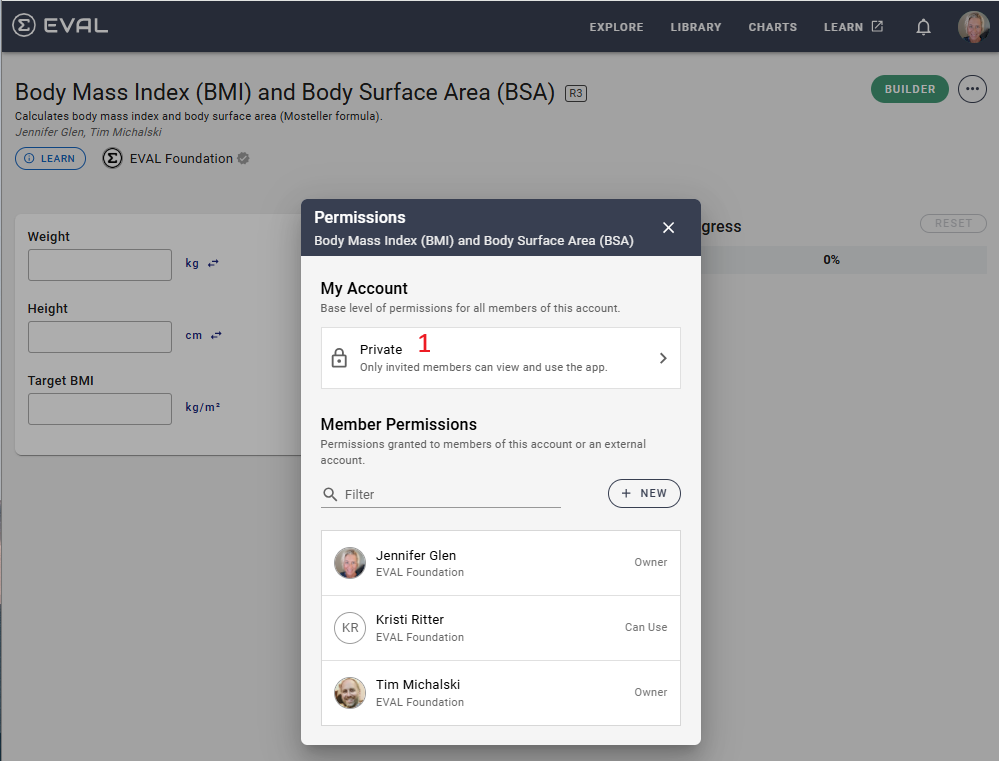
- If the application visibility is 'public', all EVAL members can access.
- If the application visibility is 'account', only EVAL members in the same account can access the application.
- If the application visibility is 'private', only members that have been granted special permission through an invite can access the application. Collaborators are designated by the account administrator or app owner who will give collaborators the authority to use, edit, or own an application. The creator of an application will be listed as a member and owner by default.
An EVAL member can serve as a collaborator for an application. Collaborators are trusted individuals from any account that are contributing to the creation, maintenance, testing, and verification of the application. The creator of an application will be listed as a collaborator and owner by default. Invitations to collaborate on an application and the level of collaboration (e.g., use, edit or own) are designated by the account administrator and application owner. Only collaborators designated with Attribution will appear under the app description and in the About section of the application. Attribution is assigned in the builder under the General tab.
Once you are in Builder for a specific application, select Permissions from the 3-dot menu:
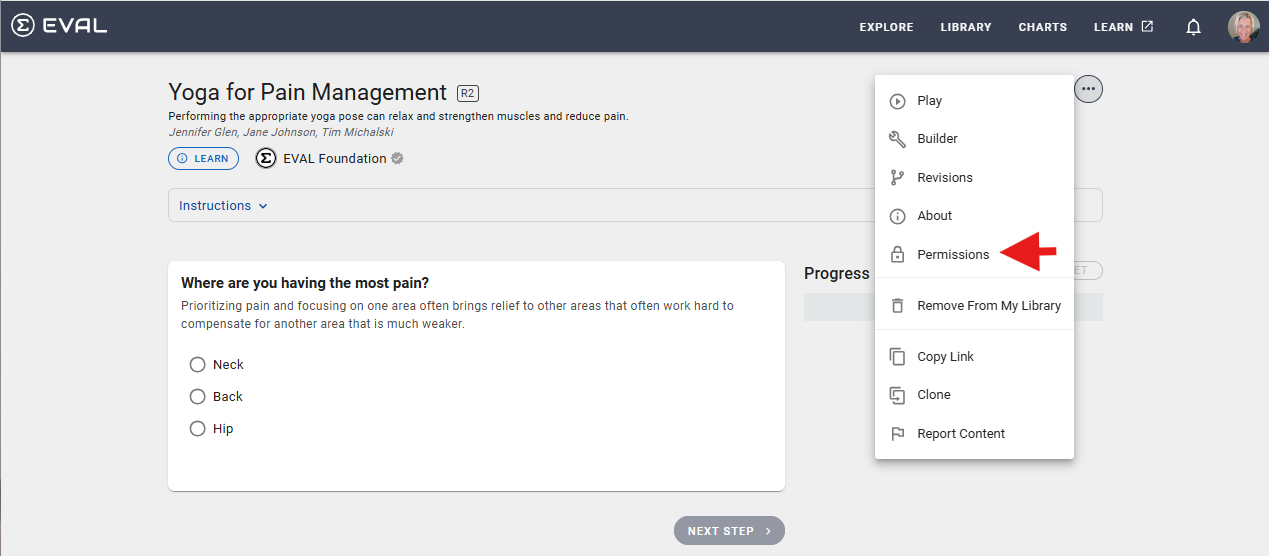
The following page displays:
The owner of the application will be displayed by default.
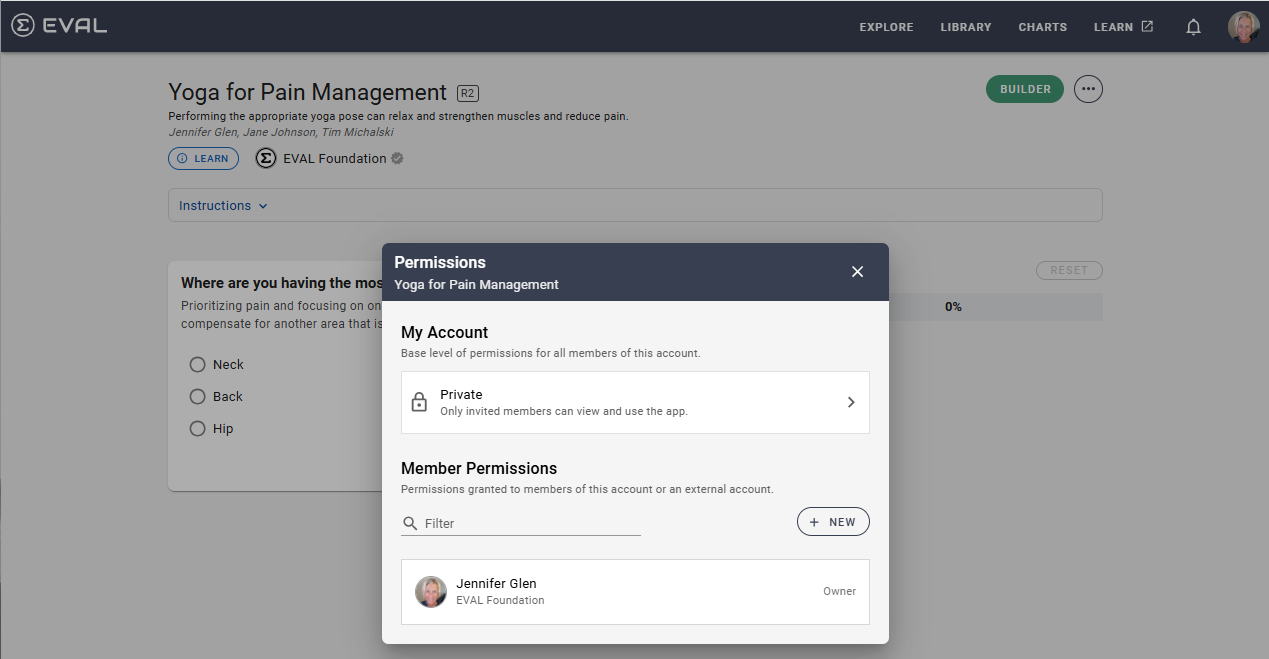
Adding Collaborators
Click New to add a new collaborator
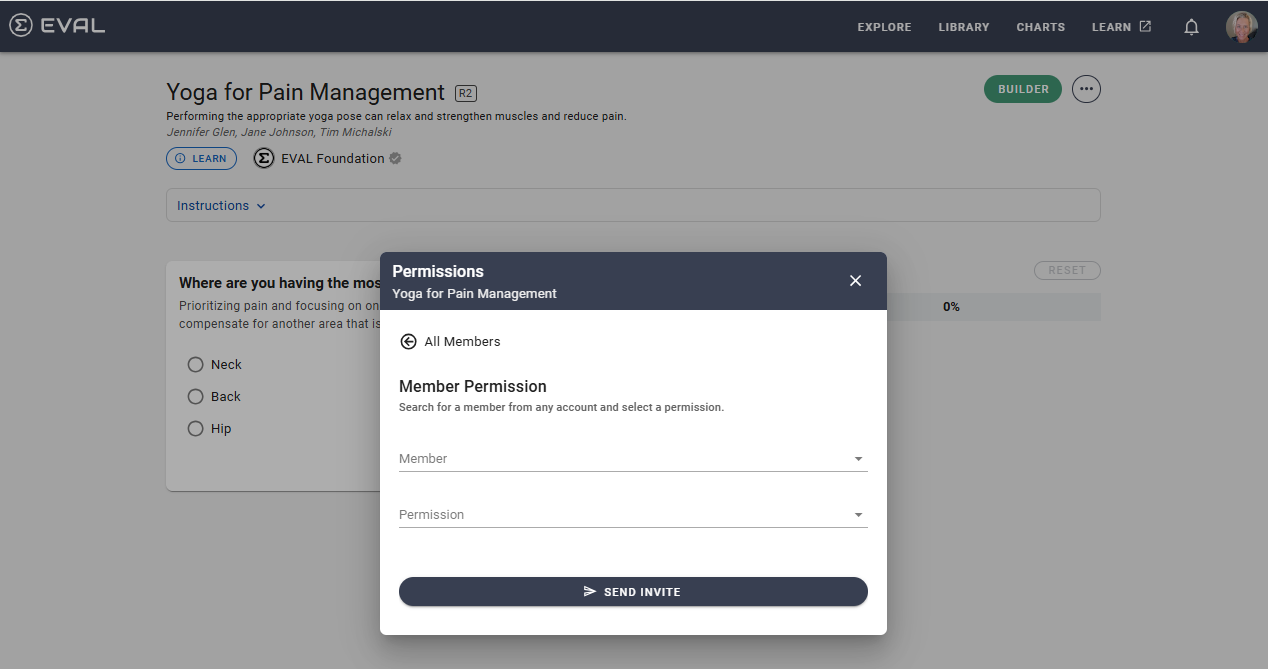
Search for a member name to add:
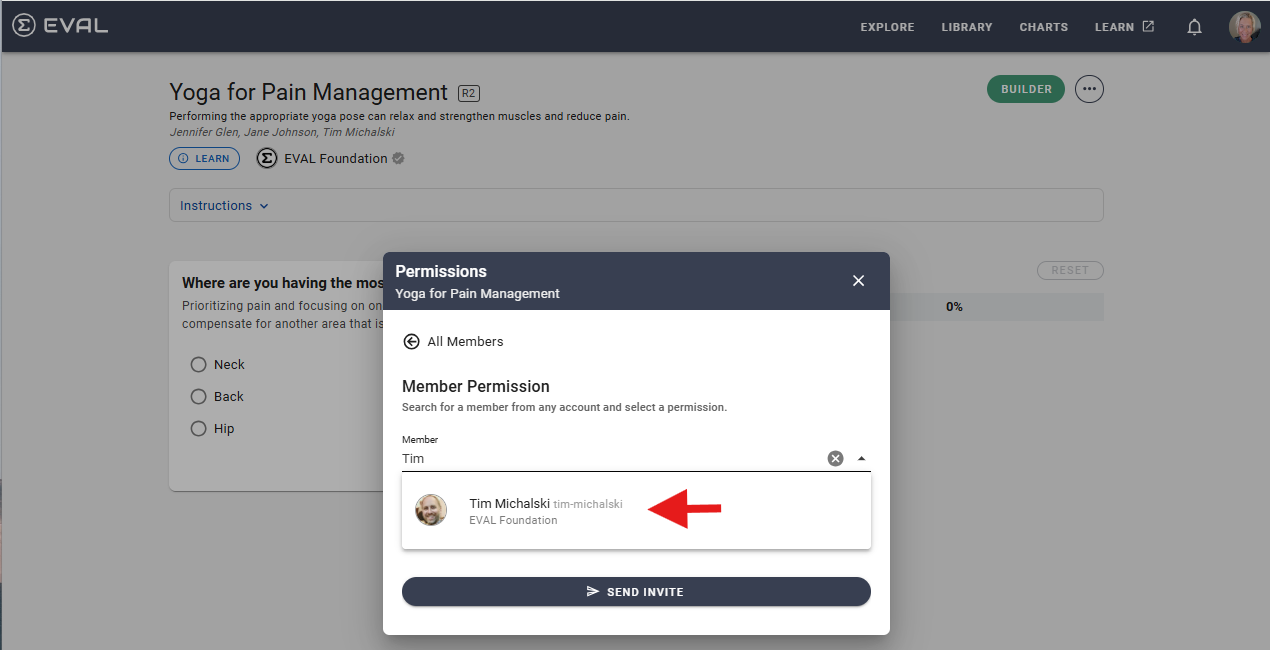
Select a permission for the new collaborator:
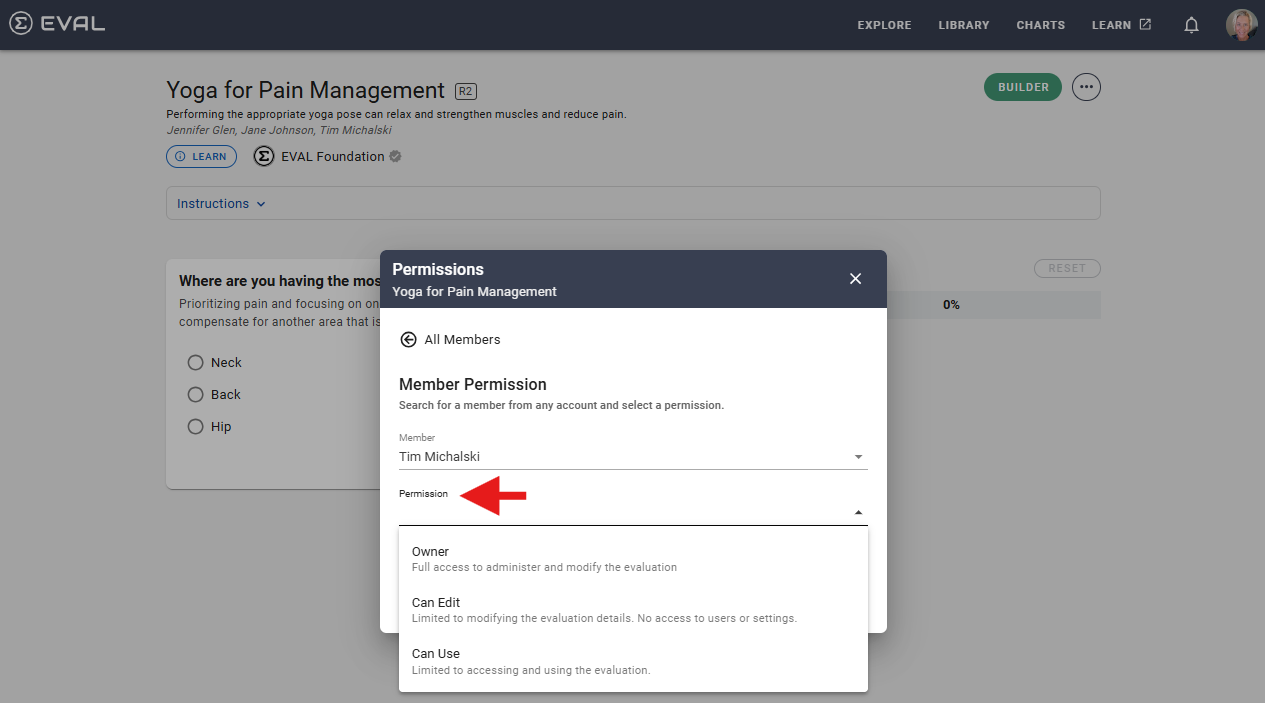
Click Send Invite
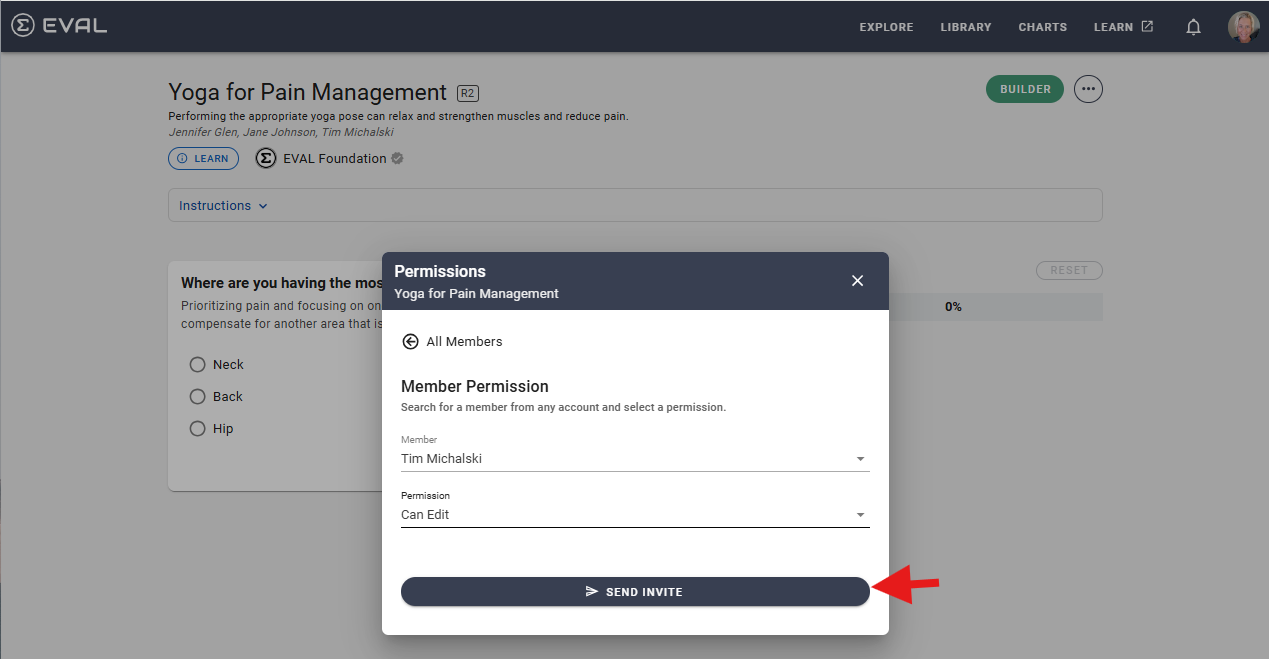
The member will be sent an email, and your page will update as follows:
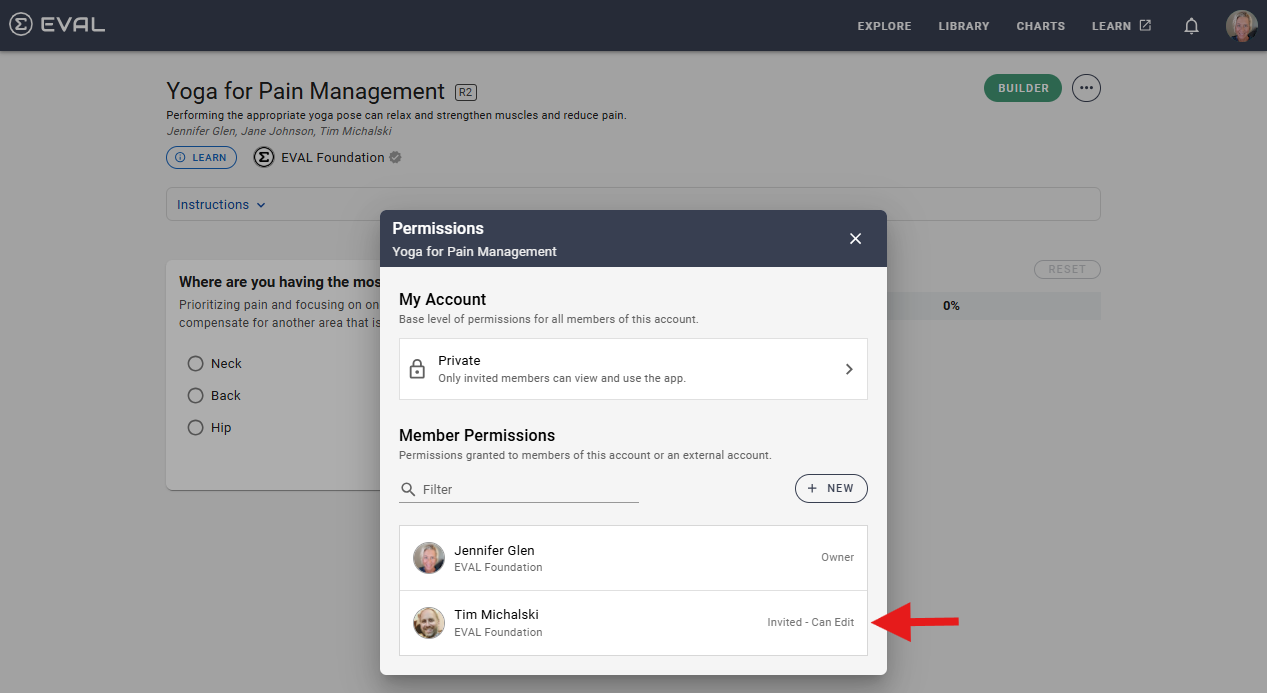
An invite can be deleted by clicking on the member's name badge and then click Delete Invitation
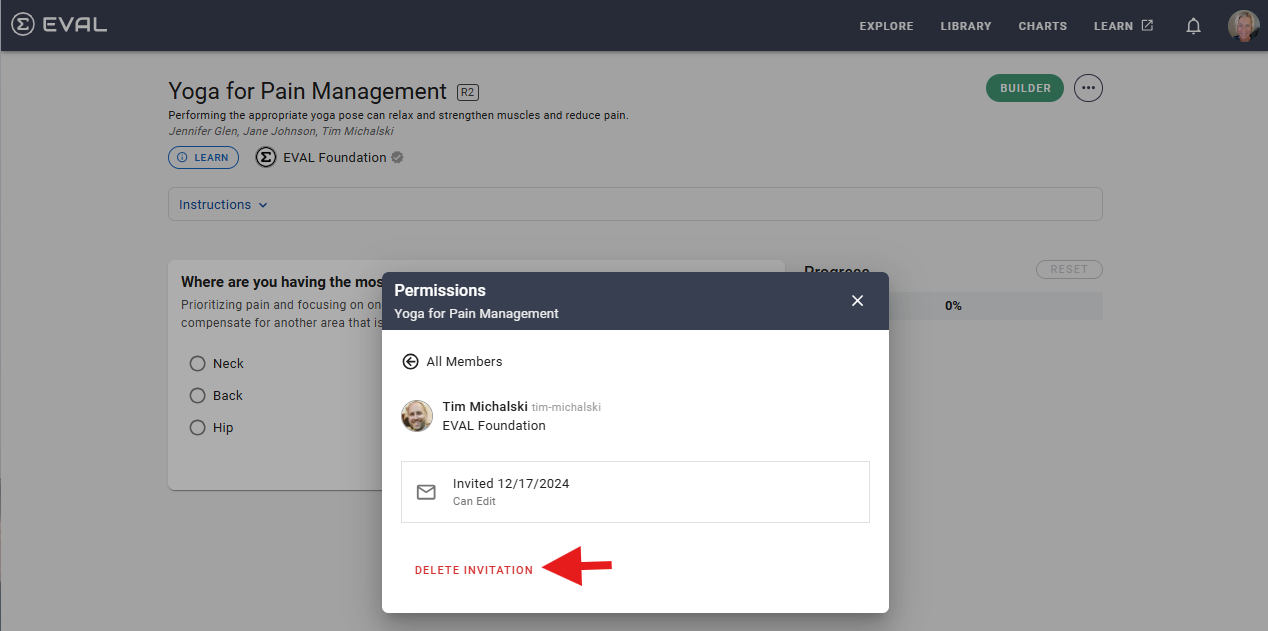
Collaborator roles for an application can be changed by clicking the member's name badge, and then clicking into the permission field and choosing the appropriate option:
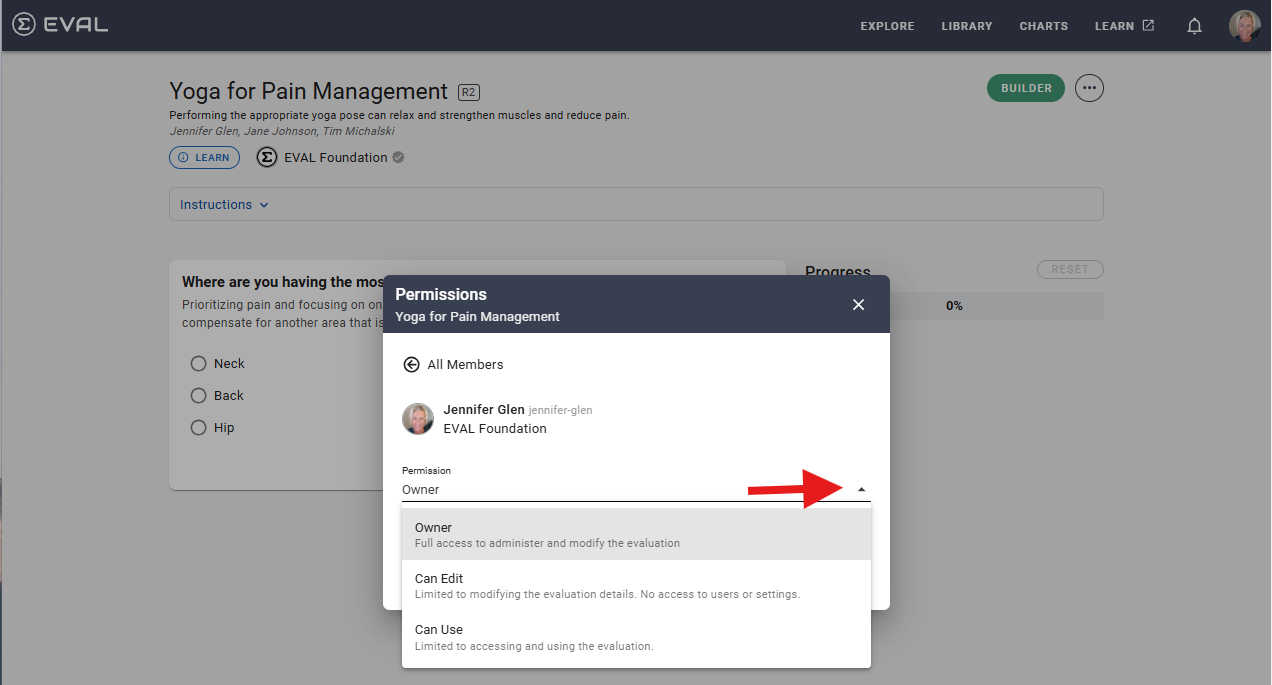
Removing Collaborators
Collaborators can be removed from the application by clicking the member's name badge and clicking Delete
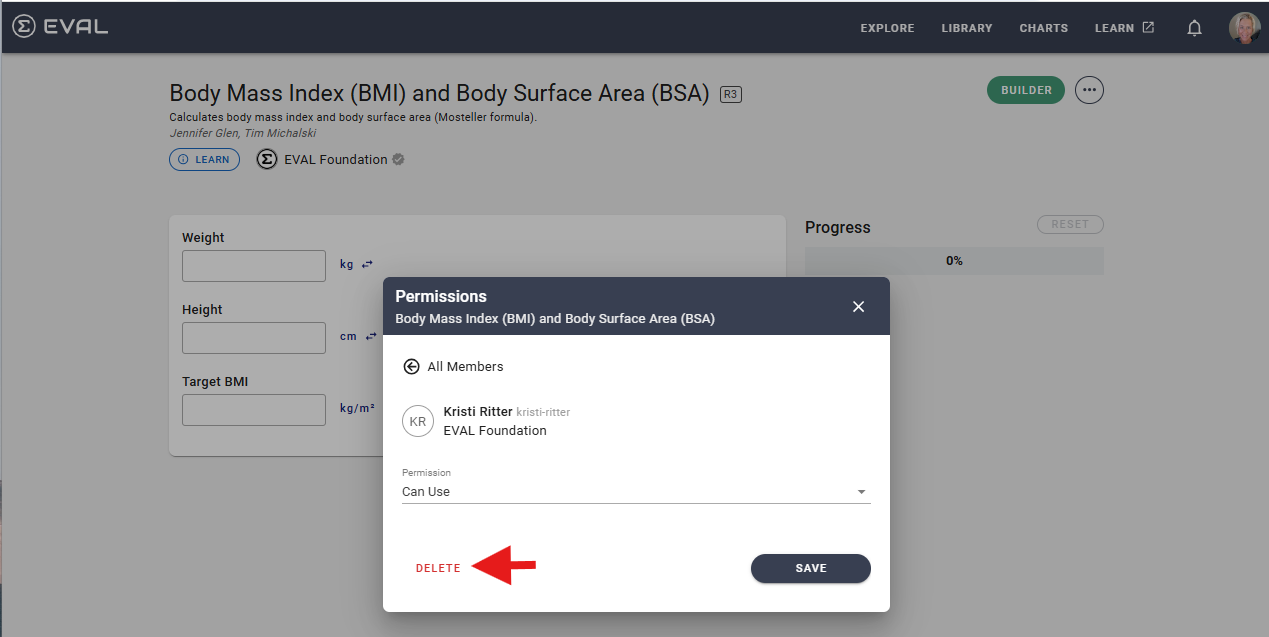
After being removed, the individual will no longer have the application in their Library.
Account Administrators will always have access to every application in the account even if they are not listed as a collaborator. Removing collaborators does not impact the Account Administrator's access to an application within the account.
Updated 12 months ago
